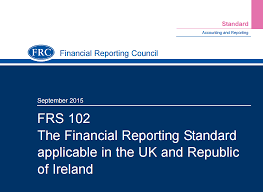
by John McCarthy Consulting Ltd. | Mar 13, 2017 | News
Under the code of ethics of the professional accountancy bodies, it is mandatory for accountancy practices, when signing up a new or existing client, to obtain a signed letter of engagement setting out the terms of the business agreement and contracted services. This blog provides tips and advice on writing effective engagement letters to avoid unnecessary client disputes.
The letter of engagement is a formal letter and is in fact a contract between the accounting or audit firm and the client. Among the many purposes of the letter is to ensure that all parties are aware of their respective responsibilities, resulting in greater clarity and hopefully fewer disputes and/or misunderstandings.
Regulated work
Formal engagement letters are mandatory for audit work and investment business advice. Certain clauses are mandatory for inclusion in engagement letters, e.g. clients’ right to complain to the firm (usually a contact name in the firm for complaints, is stated in the letter) and to the professional body of the advising firm, in the event of a complaint being unresolved. Another clause will refer to the latest anti-money laundering legislation, the Criminal Justice (Money Laundering and Terrorist Financing) Act, 2010.
A commission retention clause, is mandatory, where the firm has recommended goods or services (e.g. advising the client to seek advice from an external financial adviser) to the client, for which it will earn a commission, about which the client might otherwise be unaware.
Dispute resolution
Once a dispute arises, the letter of engagement can play an important role in helping find common ground and resolve disputes quickly, including fee disputes. The letter of engagement is often the first document requested by professional indemnity insurers in the event of a dispute, which has developed into a claim.
The lack of a well worded engagement letter will often result in an unfavourable outcome for the accounting firm. Hence, it is essential that the letter is both complete and up to date.
In a 2009 case, involving outstanding fees, discounted to around £70,000, heard in the High Court of Justice in Belfast, Northern Ireland, the judge held against the accountancy firm on various grounds, including the fact they had no engagement letter after 20 years of service to the client that owed the money. ‘Based on the evidence, I find that during a period of some twenty years there was no retainer note, no written contract and no breakdown of hourly rates of remuneration’.
Regulated work
Engagement letters are mandatory for regulated work including charities and investment/insurance intermediaries. Engagement letters are extremely important where there is an increased likelihood of dispute, such as in business valuations, profit projections, cashflow forecasts and business plans.
For some reason, these are the areas where engagement letters are most often ignored, perhaps due to the lack of formal guidance and the degree to which reliance is necessarily placed on senior management, making formal documentation of respective responsibilities all the more important.
Matters outside the scope of the service
It is recommended best practice that engagement letters include negative clauses, clearly stating what the practice will not do for the client, (e.g. management accounts, VAT returns) besides covering the work that has already been agreed to be done.
A copy of the letter should be signed by the client and returned as positive evidence of their acceptance of the terms. Best practice is to obtain positive evidence of acceptance of the terms. i.e. get the client to sign and return a copy of the letter to indicate their agreement. Adobe Sign is a useful tool that facilitates engagement letters to be sent electronically by mail and allows the client to sign off quickly, all the while tracking and electronically storing the signed documents for both parties.
What needs to be included?
The engagement letter should include the following:
1. Cover letter/key facts;
2. Standard terms of business/limitation of liability;
3. Reference to the appropriate accounting framework such as FRS 102 or IFRS;
4. Audit;
5. Accountant’s report (i.e. audit exemption and unincorporated entities);
6. ‘Agreed upon Procedures’ such as under the International Federation of Accountants ISRS 4400, where an auditor simply provides a report of the factual findings of agreed-upon procedures and where no assurance is expressed. Users of such reports assess for themselves, the procedures and findings which are reported by the auditor and draw their own conclusions from the auditor’s work
7. Accounting services e.g. accounts production, management accounting, bookkeeping;
8. Taxation services;
9. Other services e.g., payroll, VAT returns, company secretarial services;
10. Specialist reporting requirements, e.g. Central Bank requirements for insurance brokers and the Accountants’ Report to the Law Society under the Solicitors Accounts Regulations, 2014.
It is not permitted to include a limitation of liability clauses in respect of audit work. However, for non-audit work it is possible to include a limitation of liability clause in an audit engagement letter. Users should seek legal advice regarding the wording of such clauses.
Example of a liability cap for the professional accountants’ reporting engagement
The aggregate liability, whether to [insert name of client] or [insert name of third party] or any other party, of whatever nature, whether in contract, tort or otherwise, of [insert name of professional accountants] for any losses whatsoever and howsoever caused arising from or in any way connected with this engagement [and this transaction] shall not exceed [insert amount].
To access some ready-made and up to date templates of engagement letters, please visit our website at https://jmcc.ie/d7/content/publications

by John McCarthy Consulting Ltd. | Nov 25, 2016 | News
With effect from 15 November, 2016, companies and other bodies corporate, registered in Ireland are obliged to collect and retain adequate, accurate and current information on the beneficial ownership of interests held in those entities.
Entities and beneficial owners that breach the requirements face fines of €5,000 on summary conviction. This requirement was brought into law by S.I. 560 of 2016.
This initial requirement for entities to gather the names of beneficial owners precedes the preparation by Government under EU law for each Member State to prepare a register of beneficial powers to make the AML due diligence process easier and the ultimate ownership of each company more transparent.
The register must contain the name of the natural person who holds the underlying beneficial ownership of an interest in a corporate or other entity in Ireland. This legislation is derived from the EU Fourth Money Laundering Directive, which the UK has already implemented with effect from 1 July 2016 where the beneficial owners of UK companies and LLPs appear on the register of Persons of Significant Control (PSC register). Note that the requirements in Ireland may not be identical to the UK ones.
The term ‘beneficial owner’ is defined as the ‘natural person or persons ultimately controlling a legal entity through direct or indirect ownership of a sufficient percentage of the shares or voting rights or ownership interest in that entity. A shareholding of 25 % plus one share or an ownership interest of more than 25 % in the customer held by a natural person shall be an indication of direct ownership. A shareholding of 25 % plus one share or an ownership interest of more than 25 % in the customer held by a corporate entity, which is under the control of a natural person(s), or by multiple corporate entities, which are under the control of the same natural person(s), shall be an indication of indirect ownership’. More details of the process and the various definitions are in the Statutory Instrument.
There is a corresponding duty on beneficial owners to notify any changes in their ownership interests to the relevant entity.

by John McCarthy Consulting Ltd. | Nov 19, 2016 | News
Below is a comparison chart of the main differences between old and new Irish GAAP as regards the definitions, initial recognition, measurement and presentation of grants received from government.
|
Topic
|
Old Irish GAAP
|
New Irish GAAP FRS 102
|
|
|
|
|
|
Definition
|
Government grants are assistance by government in the form of cash or transfers of assets to an enterprise in return for past or future compliance with certain conditions relating to the operating activities of the enterprise. [SSAP 4 paragraph 22].
|
The same method as old Irish GAAP, except that grants exclude forms of assistance that cannot reasonably be valued or distinguished from normal trading of the entity. [FRS 102 paras 24.1-24.2].
|
|
Initial recognition and
subsequent measurement
|
Grant income is not recognised unless there is
reasonable assurance that the entity will comply with the conditions of the grant and the grant will be received. [SSAP 4 para 24].
Government grants are recognised as income over the periods necessary to match them with the related costs that they are intended to
compensate, on a systematic basis (accruals model).
Government grants received as compensation for expenses or losses already incurred (or for immediate financial support) are recognised as income in the period in which the grant becomes receivable. [SSAP 4 para 23].
|
Likewise, new Irish GAAP prohibits recognition of
grant income unless there is reasonable assurance that the entity will comply with the conditions of the grant and the grant will be received. [FRS 102 para 24.3A].
Once these criteria are met, there is a choice between the performance and the accruals model for recognition and measurement. [FRS 102 para 24.4].
The accruals model is the same as old Irish GAAP. [FRS 102 paras 24.5C-24.5G].
Please note that the FRS 102 Charities SORP specifically bans the use of the accruals model [Charities SORP FRS 102 para 5.10].
The performance model requires an entity to
recognise government grants according to the nature of the grant. No distinction is made between income and capital grants under this model.
Recognition is as follows:
A grant that does not
impose specified future
performance conditions
on the recipient is
recognised in income
when the grant proceeds
are receivable.
A grant that imposes
specified future
performance conditions
on the recipient is
recognised in income
only when
the performance
conditions are met.
Grants received before the income recognition criteria are satisfied are recognised as a liability and released to income when all attached
conditions have been complied with.
[FRS 102 para 24.5B].
|
|
Deductibility against related capital assets.
|
Government grants made as a contribution towards expenditure on fixed assets may either be:
1. treated as deferred
income and credited to the profit and loss account over the expected useful economic life of the related asset; or
2. deducted against the cost of the related asset, with a consequent reduction in the annual deprecation charge.
Those entities applying Irish company law are prohibited from applying the second option. [SSAP 4 para 15].
|
Grants are never deducted against related assets. [FRS 102 para 24.5G].
|
|
Measurement
|
Where a government grant takes the form of a transfer of non-monetary assets, the amount of the grant is the fair value of the assets transferred. [SSAP 4 para 16].
|
Grants are measured at the fair value of the asset received or receivable. [FRS 102 para 24.5].
|
|
Grants repayable
|
A government grant that becomes repayable is accounted for as a revision to an accounting estimate (that is, in the current period).
Repayment of a grant related to income is applied against any unamortised deferred credit set up in respect of the grant, and then any excess is recognised immediately as an
expense. [SSAP 4 para 27].
|
Under FRS 102, if a grant becomes repayable, it is
recognised as a liability where the repayment meets the definition of a liability. [FRS 102 para 24.5A].
|

by John McCarthy Consulting Ltd. | Nov 10, 2016 | News
The audit of the first financial statements prepared under FRS 102 is already complete, in some cases, and for the remainder, will be well under way in the near future. The standard was first published in March 2013, over 42 months ago, but took some time to bed down. It would be easy for complacency to set in, as it seems it has been around for a while. However, auditors cannot afford to be complacent on this topic.
One of the single most important requirements from the audit perspective is that the audit team will need to have a good understanding of the new FRS 102 rules under which the financial information is prepared and the requirements for that information to be audited.
In the last ten years, many of the recently qualified auditors and accounting graduates have only trained under the International FRS framework.
It may sound silly, but FRS 102 is not the same as IFRS! It is a hybrid of old Irish GAAP and IFRS and a dangerous hybrid at that.
Good audit planning and preparation for FRS 102 is central to both achieving a good technical and efficient audit file.
The main audit issues that may arise on carrying out an audit under FRS 102 could include:
Provision of Non-audit services
Some entities will require a lot of hand-holding with the process of transition including the provision of accountancy, tax and valuation services. Tax and valuation services are often ‘farmed’ out elsewhere, so are probably less of an independence threat.
The provision of accountancy services, especially, presents both self-review and management threats. There is a significant risk that FRS 102 will increase both of these threats. Safeguards will need to be implemented and well documented by the audit team.
Taxation services
FRS 102 requires fair value re-measurement differences to pass through profit and loss. Tax issues can often be more complex under the new Irish GAAP and audit personnel will need a good understanding of the taxation rules.
Valuation of fixed assets
This is potentially the most troubling area for auditors. Old Irish GAAP is largely based on historical cost accounting, with many assets measured at cost less impairment. FRS 102 demands much greater use of fair values and now makes the use of fair value mandatory in some areas.
The learning curve for the audit team
It may take a considerable amount of time for financial statement preparers to fully understand the requirements of the new standard and the relevant implications.
Some of the implications are only becoming apparent now, over three and a half years since FRS 102 was first published!
The audit plan should assess the risk that those who prepared the accounts may not have a complete understanding of the new accounting and disclosure rules.

by John McCarthy Consulting Ltd. | Nov 1, 2016 | News
‘The specialist nature of the knowledge and services provided by the accountancy service providers makes them vulnerable to being sought out and exploited by those who seek to launder the proceeds of crime or evade tax. It is recognised in international risk-based guidance that accountancy service providers may be sought to assist in the structure and design of transactions intended to conceal the nature and origin of funds.’
So says the first ever National Risk Assessment published jointly in October 2016 by the Department of Justice and Equality (DoJE) and the Department of Finance. The assessment covers the main risk areas of the many sectors in Ireland that are subject to the provisions of the Criminal Justice (Money Laundering and Terrorist Financing) Act, 2010.
The report identifies the fact that very few (80 out of a total of 21,682 AML reports) suspicious transaction reports (known as STRs) were made by the accountancy profession, according to a separate report called the 2015 Annual Report on Money Laundering and Terrorist Financing from the DoJE, given the size of the sector. As a result, (among other risk factors) the sector is assessed as Medium-High risk.
Among the accountancy services identified, by the National Risk Assessment report as vulnerable to the risk of money laundering and terrorist financing are:
- Company and trust formations;
- Insolvency services;
- Providing financial advice;
- Providing tax advice;
- Handling client money;
- Managing client assets and financial accounts;
- Investment business services;
- Auditing financial statements; and
- Company secretarial services.
This first ever National Risk Assessment has been produced ahead of the international inspection of Ireland being carried out by the FATF in December 2016 called the Mutual Evaluation Review. This review can have significant international positive or negative reputational impact potential for Ireland as a financial centre, in a post-Brexit world.
To hear more about how to be on the alert for suspicions of money laundering and terrorist financing under the Criminal Justice (Money Laundering and Terrorist Financing) Act, 2010, come to our next AML course on Monday 28 November 2016.

by John McCarthy Consulting Ltd. | Nov 1, 2016 | News
In this second article on transition, we consider some practical tips for applying the requirements of Section 35 (the transition section) of FRS 102.
The Financial Reporting Council issued a report called the Annual Review of Corporate Reporting 2015/2016 on 21 October 2016 encouraging smaller entities to ‘start their planning as soon as possible in order to ensure they are prepared for a smooth transition’.
The FRC stated that ‘small entities will also be applying FRS102 for the first time from 1 January 2016, which may pose some challenges for preparers, but should improve reporting in certain areas, as well as offering opportunities to reconsider the necessary disclosures. Anecdotal evidence suggests that some of the larger private companies applying FRS 102 from 1 January 2015 could have started their planning for transition earlier; any entities yet to transition to new standards should start their planning as soon as possible to ensure they are prepared for a smooth transition.’
Here are some of the issues that may need close attention during the transition phase:
Dormant companies – make any changes before transition date
If any changes are planned that will affect the balances in dormant companies’ financial statements, it may be beneficial to make the changes before the date of transition. This should ensure that the company can take advantage of the exemption from restating its accounting policies.
Establish fair values at the appropriate time
Although it will often be possible to obtain fair values later, it will involve more effort and research than if the valuations are done as close as possible to the date to be reflected in the valuation.
Early identification of financial instruments
Make sure that contracts and agreements are reviewed to identify all financial instruments within your business at the earliest possible stage, including contracts such as derivatives that may not have previously been recognised on the balance sheet.
Some accounting options will be available only when the necessary steps have been taken by the transition date. Fair values are used extensively in the measurement of certain financial instruments (e.g. investment properties) and this information is gathered more easily at the time of transition than afterwards.
Keep contract terms basic wherever possible
Make sure all staff with responsibilities for negotiating contracts on behalf of the organisation, from sales and trade purchases to financing arrangements, are aware of the potential pitfalls associated with any unusual contract terms. It may be helpful to draw up a list of issues that need consideration or ensure prior approval before contracts are completed.
Modification of loan arrangements
When bank loans have been renegotiated under substantially different terms prior to the transition date, but there has not been a process of derecognizing the old liability and recognising a new one, the entity may apply the exemption in Section 35 to retain this treatment on transition.
However, this exemption does not apply if these renegotiations take place after the transition date, that is after 1 January 2015 for a calendar-year company. In such instances the comparative balance sheet will need restated.
Amortisation of intangible assets
When intangibles have previously been tested for impairment and not amortised, a remaining useful life will need to be established at the transition date. When the total estimated useful life of the intangible is estimated to be more than five years, reliable back-up evidence will be required to support the estimated total useful life and the remaining useful life at transition. This would often be available in the form of cash flow projections.
Translation of goodwill and fair value adjustments at closing rate
FRS 102 requires goodwill and fair value adjustments to be translated at the closing rate. This may differ from the current treatment as current Irish GAAP does not specify the rate to be used and therefore many entities have translated goodwill and fair value adjustments at the rate ruling at acquisition.










